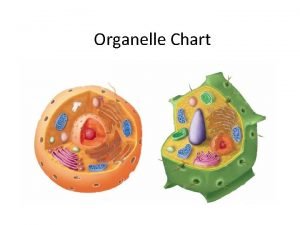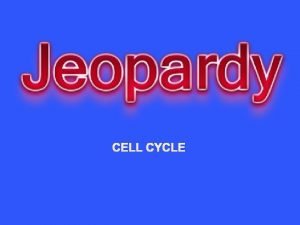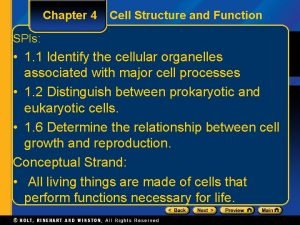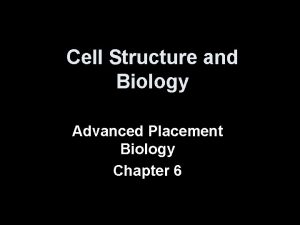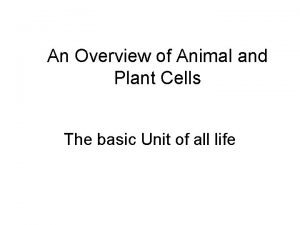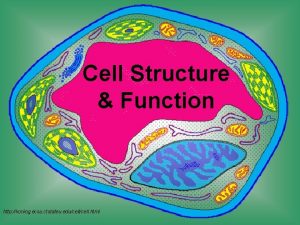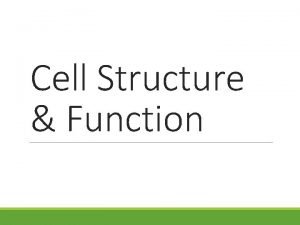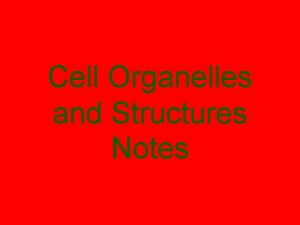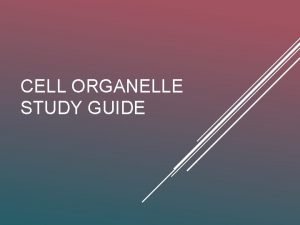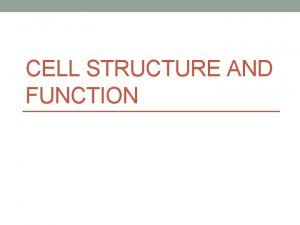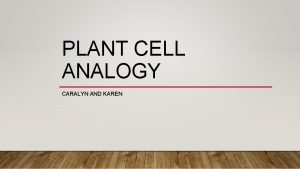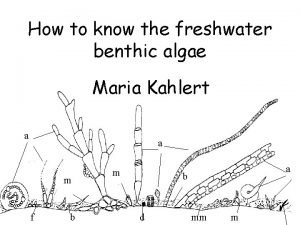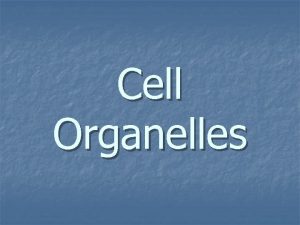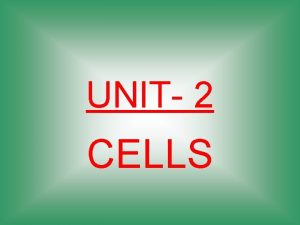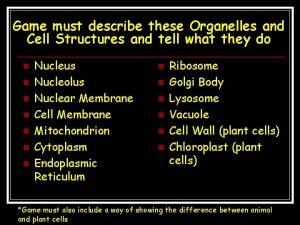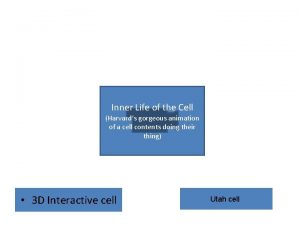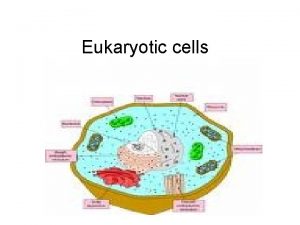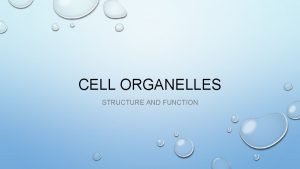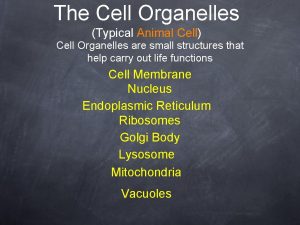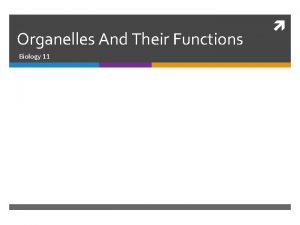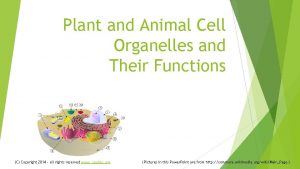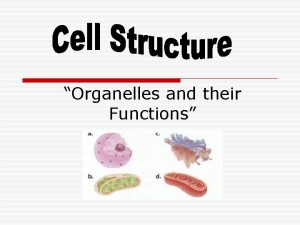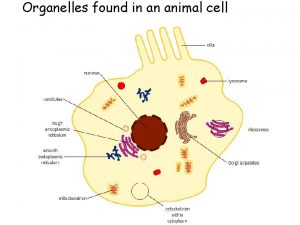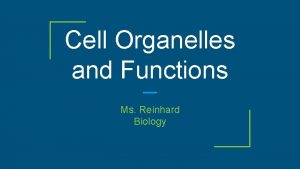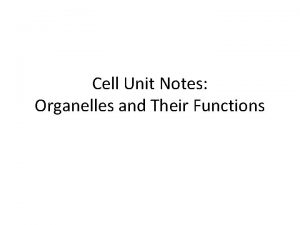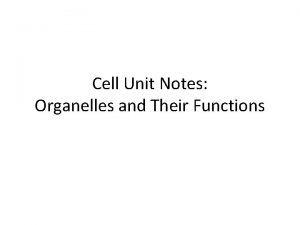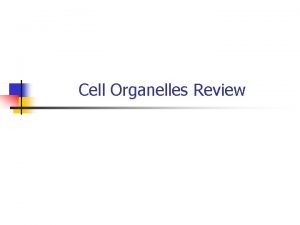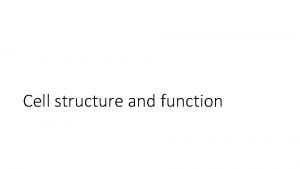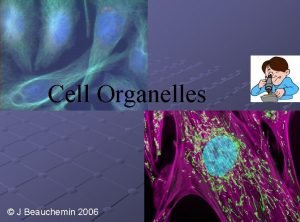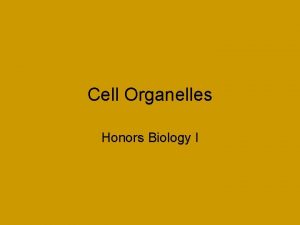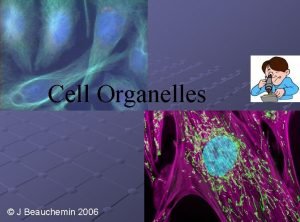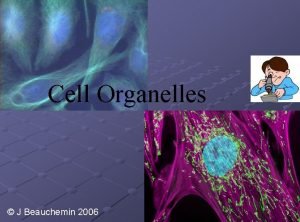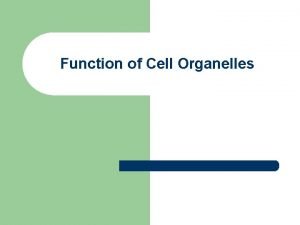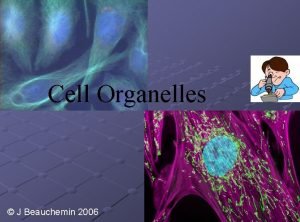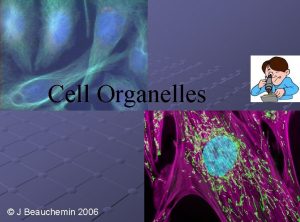Cell Organelles and Their Functions The Animal Cell





















- Slides: 21

Cell Organelles and Their Functions

The Animal Cell

The Plant Cell

The Cell Membrane • Functioncontrols the movement of materials into and out of the cell

The cytoplasm • Cytoplasm fills cell from the nucleus to the cell membrane; includes fluid, cytoskeleton, and all organelles (except nucleus)

The endoplasmic reticulum • A pathway for the transport of materials throughou t the cell; rough and smooth

The nucleus • Holds genetic material; controls cell functions

Nucleolus • Round body within the nucleus; where ribosome s are made.

Ribosomes • They build protein; made of RNA and protein. Some are free, some attached to ER.

Lysosomes • Contain digestive enzymes that break down large molecules, old cells, worn-out organelles

Mitochondria • The powerhouse of the cell; transfers energy from organic molecules to ATP

Golgi Apparatus • Packages and secretes products of the cell.

Centrioles (animal cells) • Involved in cell division in animal cells

Vacuoles • Store food, waste, and water and dissolved materials. Animal cell vacuoles form and reform over and over again.

Cell Wall • Gives a plant cell its shape; provides structure; not found in animal cells

Cilia • Short hairlike structures that enable a single-celled organism to move; also line respiratory tract

Flagella • Long, hairlike structures used for movement

Chloroplast • Contains chlorophyll to capture light for photosynthesi s; site of photosynthesi s

Chromosomes • Rodshaped bodies found in the nucleus; composed of DNA

Microtubule • Cylinders that support and give the cell shape

Pink fuzzy slippers • What organelle do these represent ?
 Mitochondria organelle facts
Mitochondria organelle facts Cell organelles structures and functions organizer
Cell organelles structures and functions organizer Cell organelles graphic organizer answer key
Cell organelles graphic organizer answer key Venn diagram animal and plant cells
Venn diagram animal and plant cells Euglena parts and functions
Euglena parts and functions During interphase a cell grows duplicate organelles and
During interphase a cell grows duplicate organelles and Section 4-3 cell organelles and features
Section 4-3 cell organelles and features Label the organelles in the composite cell
Label the organelles in the composite cell Label the organelles in the composite cell
Label the organelles in the composite cell Cell organelles song
Cell organelles song Nucleoid region
Nucleoid region Cell wall function
Cell wall function Cell organelle graphic organizer
Cell organelle graphic organizer Mitochondria double membrane function
Mitochondria double membrane function Cytoplasm analogy house
Cytoplasm analogy house Cell organelles
Cell organelles What is this cell
What is this cell Cell organelles song
Cell organelles song Cell organelles game
Cell organelles game Inner life of a cell harvard
Inner life of a cell harvard The semi fluid matrix that surrounds organelles in a cell
The semi fluid matrix that surrounds organelles in a cell Cell organelles
Cell organelles
